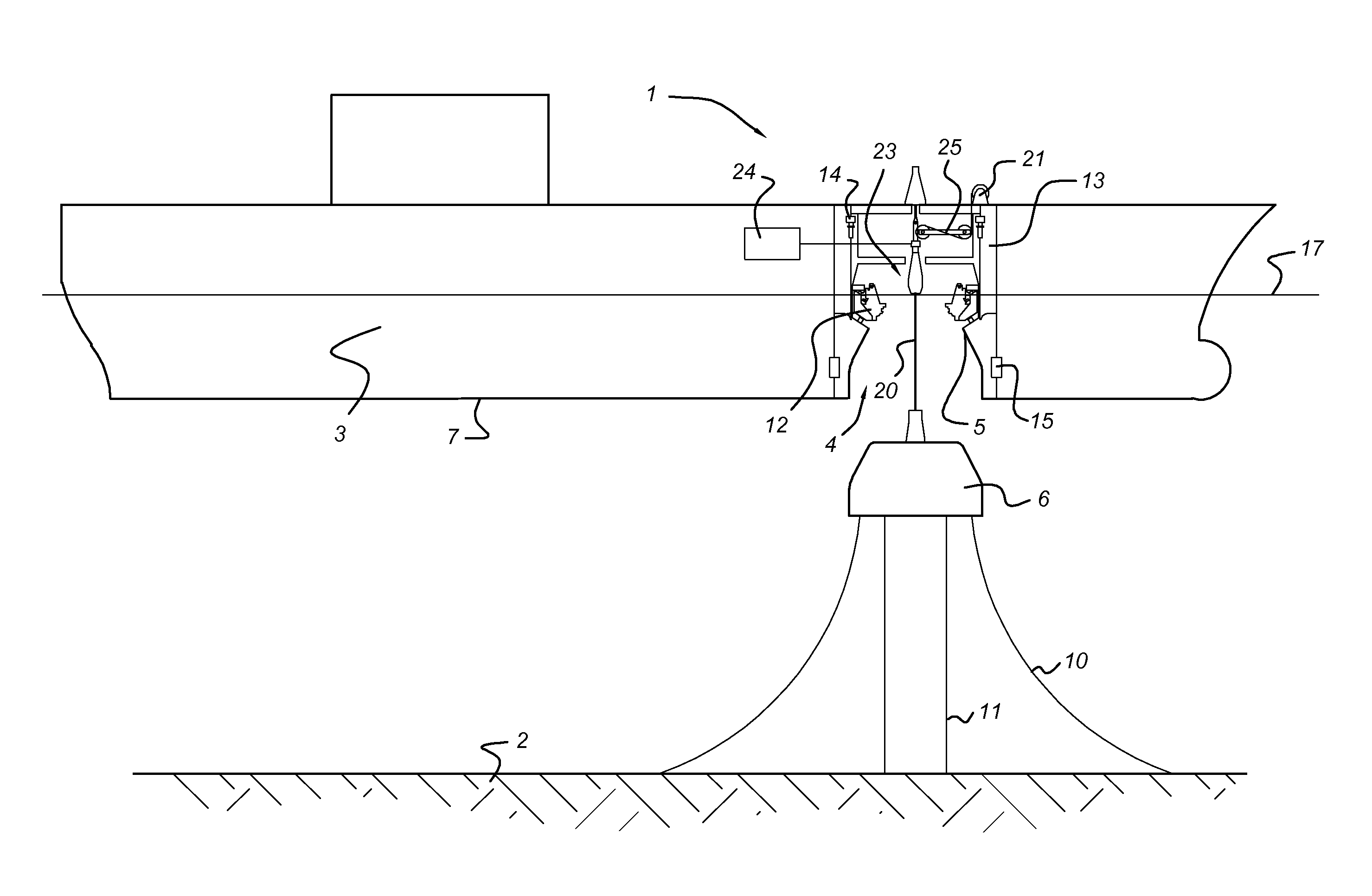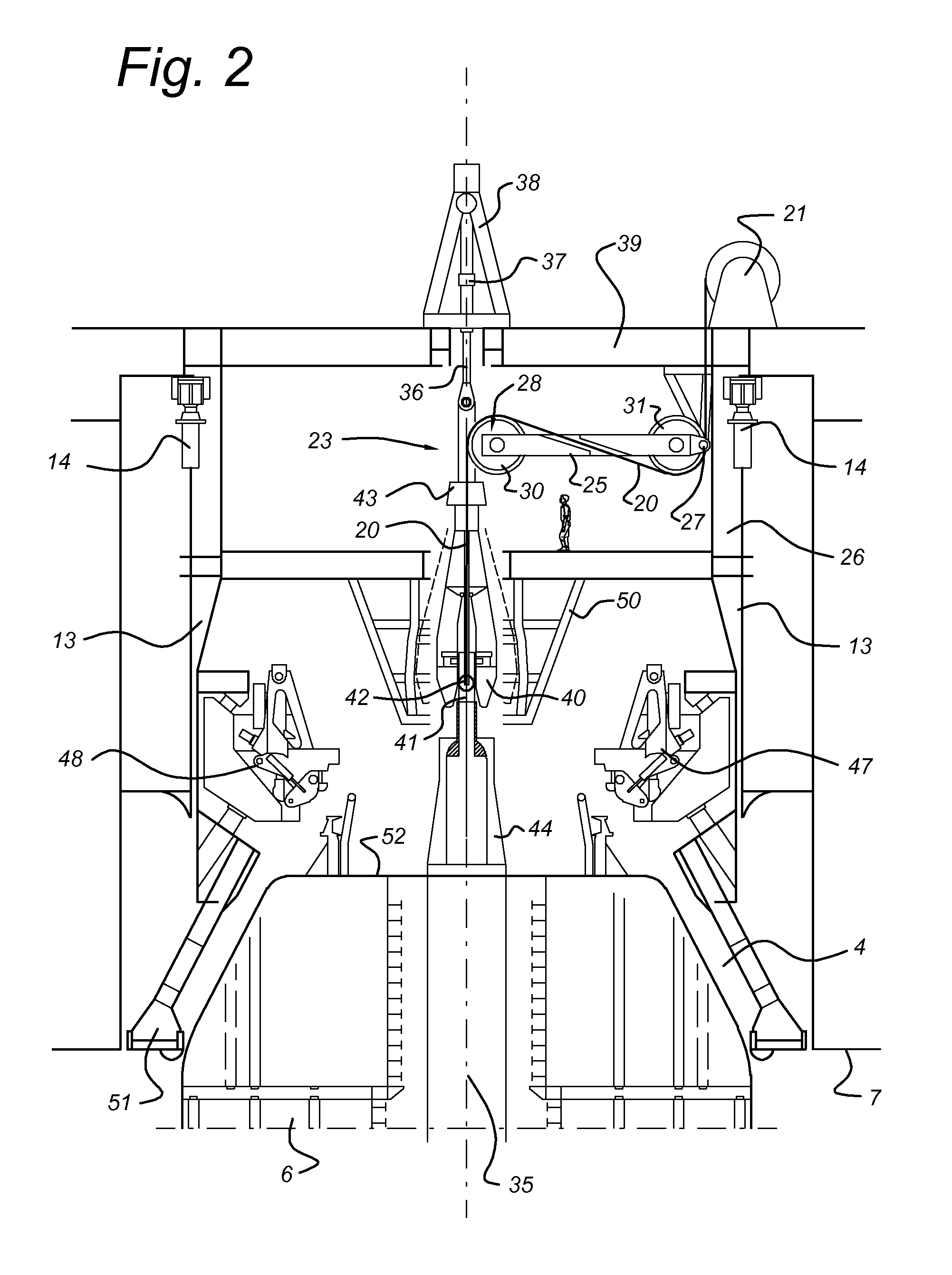Vessel comprising a mooring connector with a heave compensator
a technology of heave compensation and mooring connector, which is applied in the field of vessels, can solve the problems of reducing the heat generation of lifting wires during heave compensation, and achieve the effect of reducing power and reducing lifting for
- Summary
- Abstract
- Description
- Claims
- Application Information
AI Technical Summary
Benefits of technology
Problems solved by technology
Method used
Image
Examples
Embodiment Construction
[0031]FIG. 1 shows a vessel 1, such as a FSO, a FPSO, a barge or any other vessel that is to be anchored to the sea bed 2. In the hull 3 of the vessel 1, a receiving cavity 4 defines a contact area 5 for engaging with a mooring buoy 6. The contact area 5, that is situated near keel level 7, may also comprise a differently shaped section of the hull 3, for instance a flat section for abutting against a planar connection surface of the mooring buoy 6, that may have a truncated conical shape, a cylindrical shape or any other suitably shaped contacting interface.
[0032]The mooring buoy 6 is anchored to the sea bed 2 via mooring lines 10, that may be formed of catenary chains, synthetic wire ropes, steel cables or combinations thereof. Hydrocarbon product risers 11 extend from a subsea well to the mooring buoy 6 and are to be connected to product piping and a product swivel on the vessel (not shown). The subsea well may be situated for instance 2-3 km below water level 17. The mooring buo...
PUM
 Login to View More
Login to View More Abstract
Description
Claims
Application Information
 Login to View More
Login to View More - R&D
- Intellectual Property
- Life Sciences
- Materials
- Tech Scout
- Unparalleled Data Quality
- Higher Quality Content
- 60% Fewer Hallucinations
Browse by: Latest US Patents, China's latest patents, Technical Efficacy Thesaurus, Application Domain, Technology Topic, Popular Technical Reports.
© 2025 PatSnap. All rights reserved.Legal|Privacy policy|Modern Slavery Act Transparency Statement|Sitemap|About US| Contact US: help@patsnap.com



